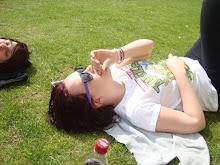At the beginning of this brief I had my heart set on printmaking. I was adamant that it was one area of communication technology that I needed to develop in order to further myself on this course and so I threw myself into it. I tried pretty much every traditional print technique offered both at Blenheim Walk and
I am confident that I know how to produce a variety of traditional prints now that I have had this chance to experiment, but for me that’s not enough. I need a chance to apply them to my design work, and to do that I need to learn how to apply myself to the design industry. I need live briefs; challenges that force me to pick up skills as I’m going along. So really the things that I still have to learn are completely unrelated to printmaking and more to do with myself as a practitioner – how do I find live briefs? Do I need a portfolio to get them? What sort of design is it that I’m looking for? And because I have these new skills, print will slot in effortlessly along the way.
Since I finished my practical work a few weeks ago I have begun to apply myself to competition briefs; at the moment I’m tackling the D&AD illustration brief and I’m also interested in the Penguin Book Awards and the YCN competitions. I feel as though I’ve contradicted myself in a massive way though. At the time I said that the whole point of these competition briefs would be to act as a platform for my print work, but now that I’m answering them I really don’t feel inclined to use print at all. In actual fact, at the minute my response to the D&AD brief is more conceptual and anti-design than anything else! So although I don’t see myself being actively compelled to utilise print in the near future, this brief has been extremely helpful in helping me to understand the type of things it is appropriate for.
With regards to the learning styles of this module I have found them to be a vast improvement on last year. Personally, I operate best through extremely self directed briefs – when left to our own devices we form learning groups of our own accord that we are comfortable in and benefit most from. For instance we took it upon ourselves to organise paper making sessions and visits to industry printers. The group tutorials were also much better. The fact that we were grouped by technology type made it so much easier to bounce ideas and criticism around, rather than having to explain your project week after week to people who can’t offer advice as they have no experience in the same areas as you. Another thing that I have become accustomed to is to working in the studio more outside of the timetabled sessions. That way if I have a problem I can go directly to the tutors (who have already had to sort my life out a few times now) and there are always third years lingering about, who, as clarified in the PPD interviews, are more than willing to dish out advice.
This module is the first time I’ve really got into a blog. Although I’ve kept a sketchbook as well for the practical things that you can’t fully grasp through a screen, the majority of my research has been documented online. Only now do I really see the benefit of blogging – so I suppose that’s a relationship to communication technology that I can brag about? I still don’t think the humble sketchbook has been rendered completely useless but I think I can distinguish which aspects of my research would be better presented digitally now.
Throughout the brief I did get a lot of things wrong whilst trying to print – nothing major, just things like accidentally bending my etching plate in the rolling press and misreading the heat/time exposure for flocking resulting in a lovely burnt piece of canvas. I think it’s a massive part of the learning process; it reminds you that you are only human, you don’t know it all and you will need to ask for help sometimes. Technicians would rather show you how to do something properly than see you get it wrong and ruin your work or a piece of equipment! This has also helped me to form working relationships with the print technicians –I feel totally comfortable approaching them for help and I know that if I’m enthusiastic about what I’m doing then they’ll be enthusiastic about helping me.
Overall I’ve found this brief extremely helpful. Not so much in relation to printmaking but more to do with how I manage my own learning. I know that nothing’s going to happen of it’s own accord and that self direction, for me, is the way forward.


No comments:
Post a Comment